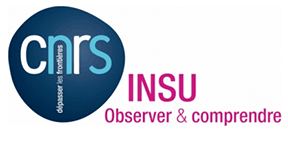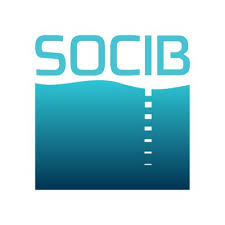Electrical conductivity of the water column
Type of resources
Topics
INSPIRE themes
Keywords
Contact for the resource
Provided by
Representation types
Scale
-

The National Glider Facility (GNF) is held by DT-INSU. It is installed inside the Mediterranean Ifremer center and is part of the CETSM (European Centre of underwater technologies). GNF started in September 2008. It is manned by 3 engineers and 1 technician and operates 10 gliders. The facility is fully equipped with: a glider ballasting tank, an electronic lab for pre-deployment preparation, servers and communications devices for glider operations. It is linked to the ego-network.org web page offering a collaborative work environment and tools for piloting gliders. The following sensors can be mounted on the gliders: CTD, Oxygen Optode, Fluorimeters (ChlA, CDOM, Phycoerythrine, turbidity), Back scattering (470-880 nm).
-

ISMAR OS is a system around Italy and is composed by 11 fixed platforms, HF radars, a glider. The installations proposed for TNA embrace different marine environments and can be used independently. SiCO is a twin-mooring system placed is in a key area connecting the Eastern and Western Mediterranean Sea. Equipped with current profilers and CTD probes, it continuously monitor surface and intermediate exchange of water masses and properties between the basins. A pCO2 probe is installed in SiCO1 near the bottom to widen the contribution of the observatory to climate studies and ocean acidification research. The site is part of the CIESM Hydro-Changes Programme.
-

The SOCIB Glider Facility is an example of new technologies being progressively implemented in coastal to open ocean regions allowing autonomous and sustained high-resolution monitoring of specific areas. SOCIB-GF is fully operational in JERICO-NEXT and since 2006 has accomplished 64 missions, 1.244 days in water, 14.555 nm navigated with 39.378 vertical profiles collected. SOCIB-GF human team is composed out of 2 full-time engineers, 1 full-time technician, 2 part-time field-technicians (for at sea operations), 2 part time engineers (for glider data management) and 2 part-time experienced scientists. An intense and fruitful collaboration with IMEDEA (CSIC-UIB) team also exists since the origin of glider operations. The fleet in 2016 consists of 7 Slocum gliders and 2 iRobot Seagliders, equipped for collecting both physical (T, S) and biogeochemical data (fluorescence, oxygen, etc.) at high spatial resolutions (2km). SOCIB-GF includes a pressure chamber (1.000 m) as well as ballasting and operations labs. It also has access to other SOCIB facilities such as (1) ETD (Engineering & Technology Development): Hurricane Zodiac 9.2 m RIB, Lab-Van and harbour warehouse; (2) SOCIB-R/V: a 24 m coastal catamaran and (3) Data Center: including data management, public repository, on-line web-based platform tracker -for mission monitoring- and development of tools such as the glider processing toolbox (Troupin et al., Methods in Oceanog., 2015, - freely available scripts available at https://github.com/socib/glider_toolbox).
-

OBSEA is an underwater cabled observatory connected with 4 km of cable to the coast of Vilanova i la Geltrú (Barcelona, Spain) and placed at a depth of 20m in a fishing protected area. Operations are done by scuba divers and small boats. A surface buoy located at 40m from the underwater unit is an extension of OBSEA working as surface platform for measuring oceanographic and environmental parameters. A Shore Station provides power (3.6kW) to feed all the devices and the fiber optic link (1Gbps) to establish communications. At the same time from land we manage alarms and data storage. With a length of 1000 meters the terrestrial cable connects the Ground Station to the Beach Manhole where the submarine cable begins its route to the node location at 4 km from the coast and 20 m depth. OBSEA has nowadays two junction boxes with a total of 16 underwater webmate connectors.
-

Socib Glider
-

Socib Glider
-

Socib Glider
-

Socib Glider
-

Socib Glider
-

COSYNA (Coastal Observation System for Northern and Arctic Seas) is an operational coastal monitoring, forecasting and information system for the North Sea composed by fixed platforms, FerryBoxes, gliders and HF-radar systems. It is being developed by institutes of the German Marine Research Consortium (KDM) and collaborating institutions and is operated by the HZG Research Centre. The infrastructure represents an investment of 9 M €. It was build up since 2007 and is fully operational since 2012. COSYNA_SFB is a Stationary FerryBox system, including self-cleaning features, installed in a container at the mouth of the Elbe River equipped with sensors T, C/S, turbidity, DO, pH, chlorophyll-afluorescence, CDOM fluorescence, nutrients (NOx, NO2, PO4, SiO2) and a cooled water sampler.
 Metadata catalogue
Metadata catalogue